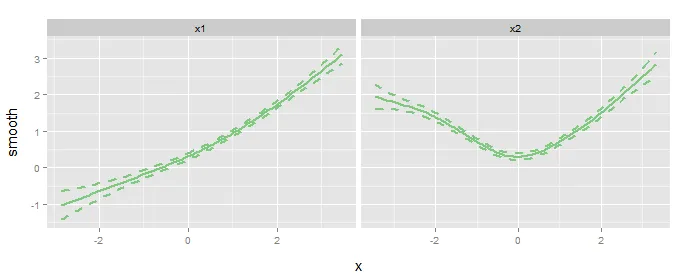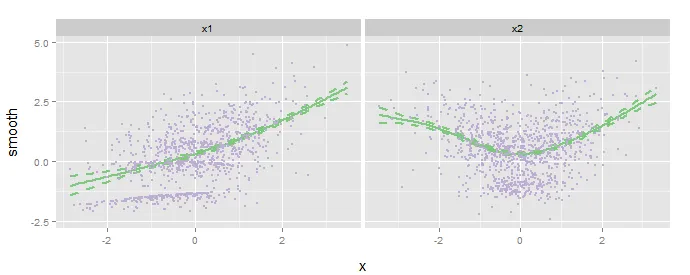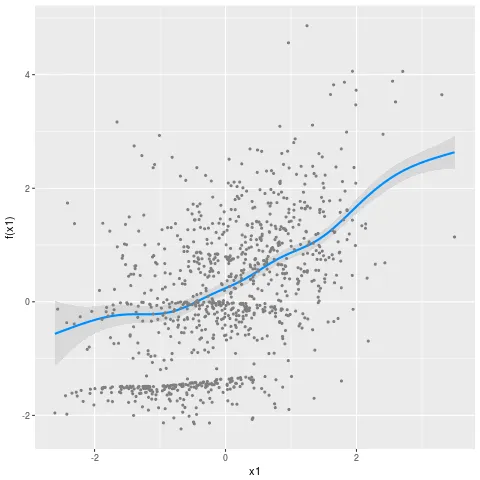我正在使用mgcv包中的gam模型进行拟合,并将结果存储在model中。到目前为止,我一直在使用plot(model)查看平滑组件。我最近开始使用ggplot2并喜欢它的输出。所以我想知道,是否可能使用ggplot2绘制这些图形?
以下是一个示例:
x1 = rnorm(1000)
x2 = rnorm(1000)
n = rpois(1000, exp(x1) + x2^2)
model = gam(n ~ s(x1, k=10) + s(x2, k=20), family="poisson")
plot(model, rug=FALSE, select=1)
plot(model, rug=FALSE, select=2)
我对 s(x1, k=10) 和 s(x2, k=20) 感兴趣,而不是适配。
部分回答:
我深入研究了 plot.gam 和 mgcv:::plot.mgcv.smooth,并构建了自己的函数,从平滑的组成部分中提取出预测效果和标准误差。它不能处理 plot.gam 的所有选项和情况,因此我仅认为它是一个部分解决方案,但它对我很有效。
EvaluateSmooths = function(model, select=NULL, x=NULL, n=100) {
if (is.null(select)) {
select = 1:length(model$smooth)
}
do.call(rbind, lapply(select, function(i) {
smooth = model$smooth[[i]]
data = model$model
if (is.null(x)) {
min = min(data[smooth$term])
max = max(data[smooth$term])
x = seq(min, max, length=n)
}
if (smooth$by == "NA") {
by.level = "NA"
} else {
by.level = smooth$by.level
}
range = data.frame(x=x, by=by.level)
names(range) = c(smooth$term, smooth$by)
mat = PredictMat(smooth, range)
par = smooth$first.para:smooth$last.para
y = mat %*% model$coefficients[par]
se = sqrt(rowSums(
(mat %*% model$Vp[par, par, drop = FALSE]) * mat
))
return(data.frame(
label=smooth$label
, x.var=smooth$term
, x.val=x
, by.var=smooth$by
, by.val=by.level
, value = y
, se = se
))
}))
}
这将返回一个“熔融”数据框与平滑组件,现在可以使用
ggplot来处理上面的示例:smooths = EvaluateSmooths(model)
ggplot(smooths, aes(x.val, value)) +
geom_line() +
geom_line(aes(y=value + 2*se), linetype="dashed") +
geom_line(aes(y=value - 2*se), linetype="dashed") +
facet_grid(. ~ x.var)
如果有人知道一种能够在一般情况下实现这一点的软件包,我将非常感激。

 颜色来自于
颜色来自于
geom_smooth中使用predict,因此只需使用method='gam'。 - Señor Omgcv中的一个示例为起点,并说明您要复制的图形),我们可以(很可能)向您展示如何操作。 - IRTFM